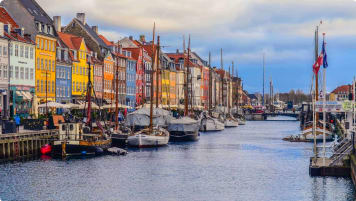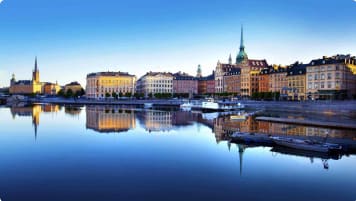Exploring the Faroe Islands: The Definitive Guide for Travellers
The Faroe Islands, far far away Tjornuvik village, Faroe Islands The Faroe Islands (also called the Faroes or Faeroes) is a self-governing region of the Kingdom of Denmark, a group of 18 pristine volcanic islands…
12 Mar 19 · 8 mins read
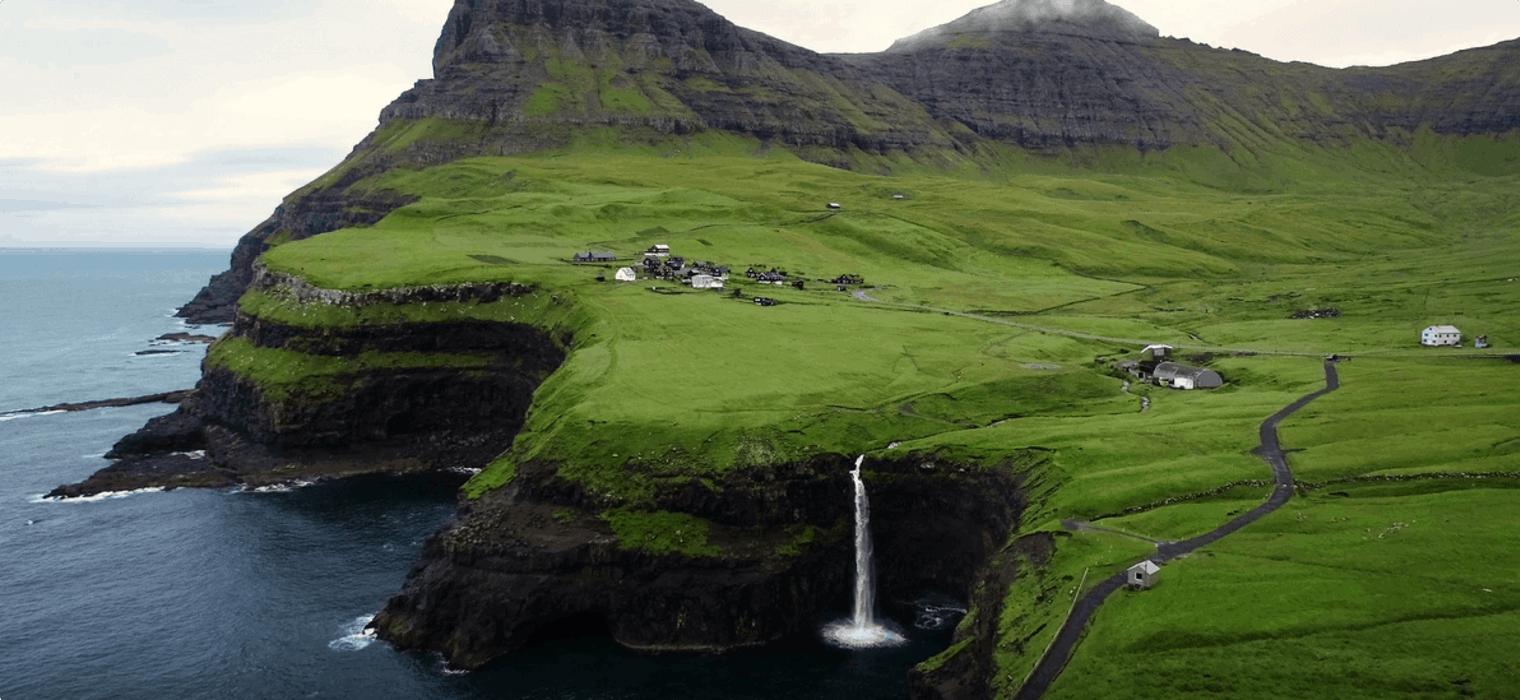
The Faroe Islands, far far away
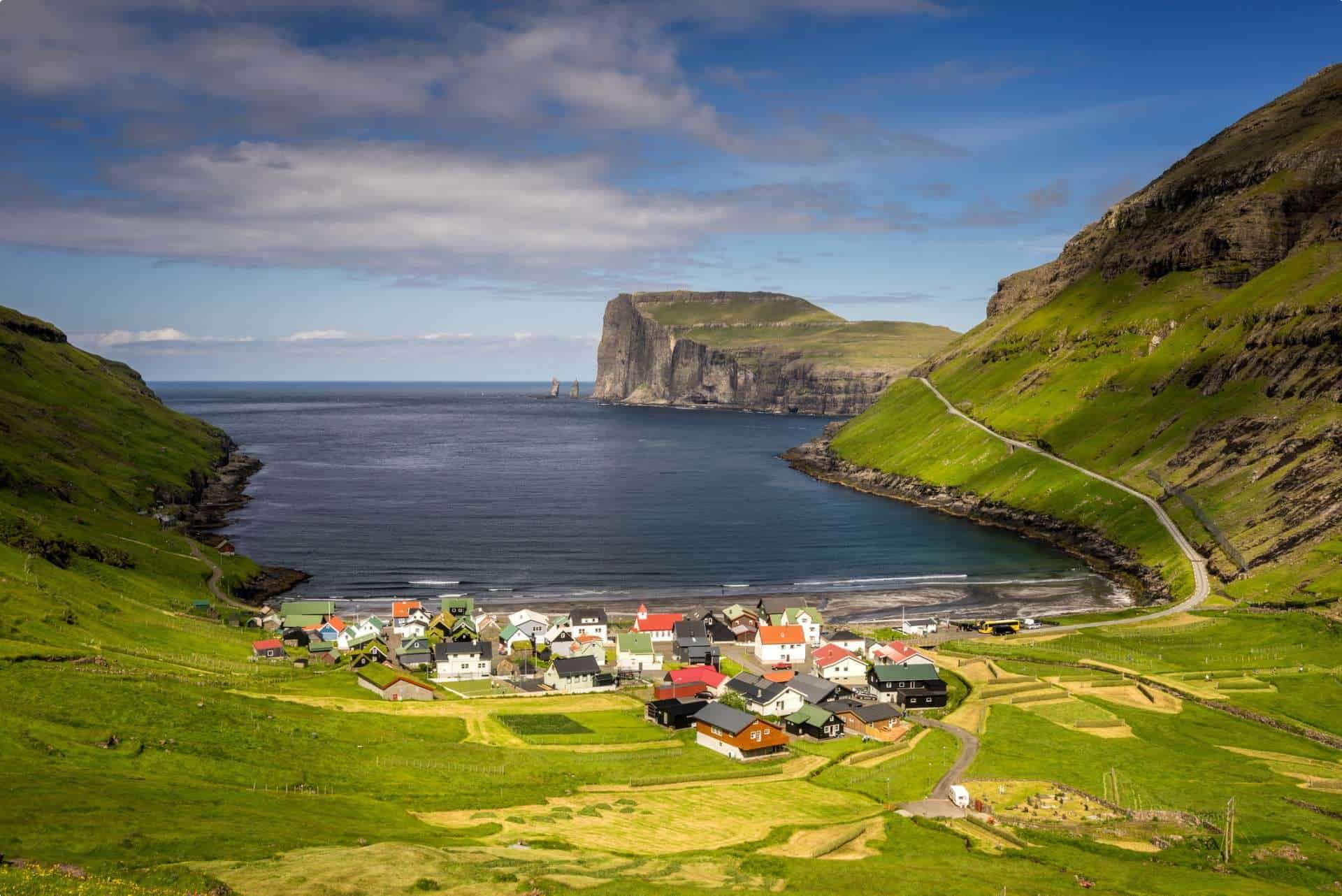
The Faroe Islands (also called the Faroes or Faeroes) is a self-governing region of the Kingdom of Denmark, a group of 18 pristine volcanic islands sitting on the North Atlantic between Iceland and Norway. The islands have a total land area smaller than London home to a population of only 50,000 people who are outnumbered by sheep nearly two to one. Every year they welcome tourists keen to experience the islands’ rugged terrain, oceanic climate, and breathtaking natural landscapes. In this article we will look at the Faroe Islands’ history and famed sights–and delve a little bit into its reason for closing to tourism one weekend this spring of 2019.
Faroe Islands: Closed for Maintenance, Open for Volunteers (April 26 to 28, 2019; April 16 to 17, 2020)
The Faroe Islands is like an open secret. It does not appear in many world maps, and the Faroese tourism board had to persuade Google to include the islands in Google Street View through a 2016 marketing campaign called Sheep View, where they strapped a camera to a sheep travelling all over the islands.
However, even though it is not as well-known as nearby destinations (such as Reykjavik and Oslo), its foreign visitors every year easily outnumber its residents (and sheep), with tourist numbers increasing 10% annually for the past five years.
As we’ve mentioned in our article before about overtourism, tourism can be a double-edged sword. The Faroe Islands tourist board (Visit Faroe Islands) notes that they currently have no overtourism problems, but some of their popular locations are already feeling tourism’s effects.
In what appears to be an unprecedented move, the Faroe Islands will be “closed for maintenance” on April 26 to 28, 2019. On this one spring weekend, no tourists will be allowed–unless they want to lend a helping hand.
Our idea is, quite simply, to close for maintenance and open for voluntourism over the weekend of Friday 26 to Sunday 28 April 2019 – and to repeat and expand on this idea each year if it works well…We hope that our new project may inspire other countries to follow suit, and to set up their own Maintenance Crews, thereby encouraging tourists to help in whatever way is needed to deal with the particular problem/s affecting that destination. (Source.)
Tourist-volunteers need to pay for their own flights, but the Faroese nation will foot the bill for accommodation, food, and island transport as a thank you for working on the six confirmed maintenance projects for the islands. Projects include building new paths, mending fences, and adding sign posts.
Update November 14, 2019: The Faroe Islands is rolling out the same program next year, on April 16-17, 2020.
Before we look at the islands’ main sights (many of which will be part of the maintenance projects), let’s step back in time to learn about the Faroes’ beginnings.
History of the Faroe Islands
The Faroe Islands were settled by Viking-age settlers from Norway in the 9th century. Its medieval culture clearly had Norse roots; its name in Faroese is Føroyar, derived from old Norse which means “Sheep Islands”.
Archaeological findings reported in 2013 show that there have been people living on the islands between the years 400 and 600, centuries before the Vikings arrived. It is unknown who these early settlers were. One theory is that they were Christian hermit monks from Scotland or Ireland. (Recent scholarship now says it could have been Irish monks; most historical timelines about the Faroe Islands begin with them.)
Whoever they were, these seafarers would have known the islands were there before they set sail for it. To quote archaeologist Mike Church, “It’s unlikely that this settlement was accidental.”
In any case, the islands fell under the large-scale Viking conquest of northwest Europe around the year 800. The Vikings established a parliament (Althing, later Løgting) in Tórshavn, the capital city, then and now, of Faroe Islands. This makes the Faroese parliament one of the (if not the) oldest existing parliaments in the world.
Christianity was introduced to the islands around 1000 by the king of Norway, supplanting the rites associated with the Norse pantheon. Shortly after (circa 1035), upon the death of the Faroe Islands’ last Viking chieftain, the islands were ruled by the Norwegian kingdom.
In 1380, the Faroe Islands, along with the rest of Norway, passed to the Kingdom of Denmark. Its remoteness from both Norway and Denmark afforded the Faroe Islands special jurisdiction over its own domestic affairs. In the early 18th century, the Faroes became a Danish royal trade monopoly. This monopoly restricted the islands’ economic development. When the trade monopoly was abolished in 1856, the Faroe Islands developed a commercial fishing industry focused on exports, especially of frozen and dried cod, and began to accumulate wealth.
Since 1948, the Faroe Islands have been a self-governing region within the Danish state, with two representatives in the Danish legislature, called the Folketing. Foreign policy, military defence, police, and the monetary and judicial systems are overseen by the Folketing.
In the 1990s, the Faroese fishing industry collapsed, triggering the Faroe Islands’ bank to declare bankruptcy in 1992. The severe economic crisis that followed led to substantial emigration to Denmark, but the islands recovered economically around 1997-98.
Much like other Scandinavian countries, the Faroese have developed a welfare society offering free education and healthcare for all of its citizens.
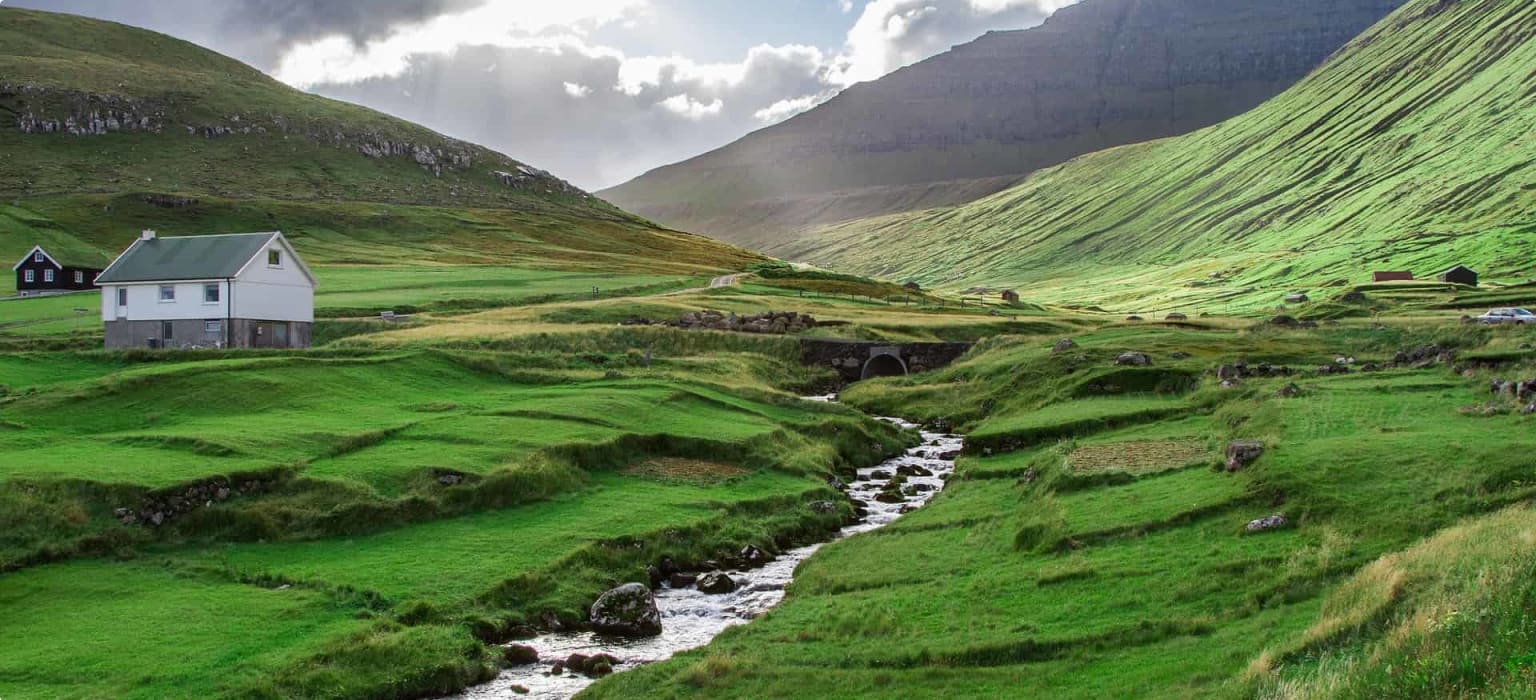
Faroe Islands: What to Expect, Where to Go
“Sheep View” went viral in 2016, and it helped put the Faroe Islands (literally) on the map. A record number of tourists–more than 100,000–visited the islands in 2017. This number will only increase as many more discover the islands’ natural beauty.
The People
Many of the Faroese are descendants of Norwegian Vikings. Nearly half (40%) of the population lives in the capital. The official language of the islands is Faroese, which derives from Old Norse and is closely related to other Scandinavian languages. Danish and English are also taught in schools.
Climate
Faroese climate is affected by the warming effect of the North Atlantic current. Summers are cool with an average temperature of 13°C, and winters are relatively mild with an average temperature of 3°C. However, the diverse terrain and gusty winds can contribute to wildly unpredictable weather, which can change several times in one day.
Currency
The Faroese currency is the króna, issued by the national bank of Denmark and which shares the same code as the Danish krone–DKK.
Public Transport
There is an efficient public transport system in place. Buses are privately run but ferries are subsidised by the government, and fares can be as cheap as DKK 15 (US$2.28 or AU$3.19). Helicopter travel is also subsidised, so if riding a helicopter has always been your dream, the Faroe Islands is the best place to do it because it is where you will find the cheapest helicopter ride (around DKK 125 or US$19/AU$27). However, tourists are expected to take a helicopter only on a one-way trip (return by ferry), for the sake of the communities which rely on this mode of transportation.
The islands are connected by tunnels and sub-sea tunnels. Vágatunnilin connects the western island of Vágar (where the airport is) to the island of Streymoy (where the capital Tórshavn is located). The other sub-sea tunnel (Norðoyatunnilin) connects the northern island of Borðoy (Klaksvík) to the island of Eysturoy (Leirvík).
Following are a few of the incredible places to visit in the Faroes.
Lake Sørvágsvatn/Leitisvatn
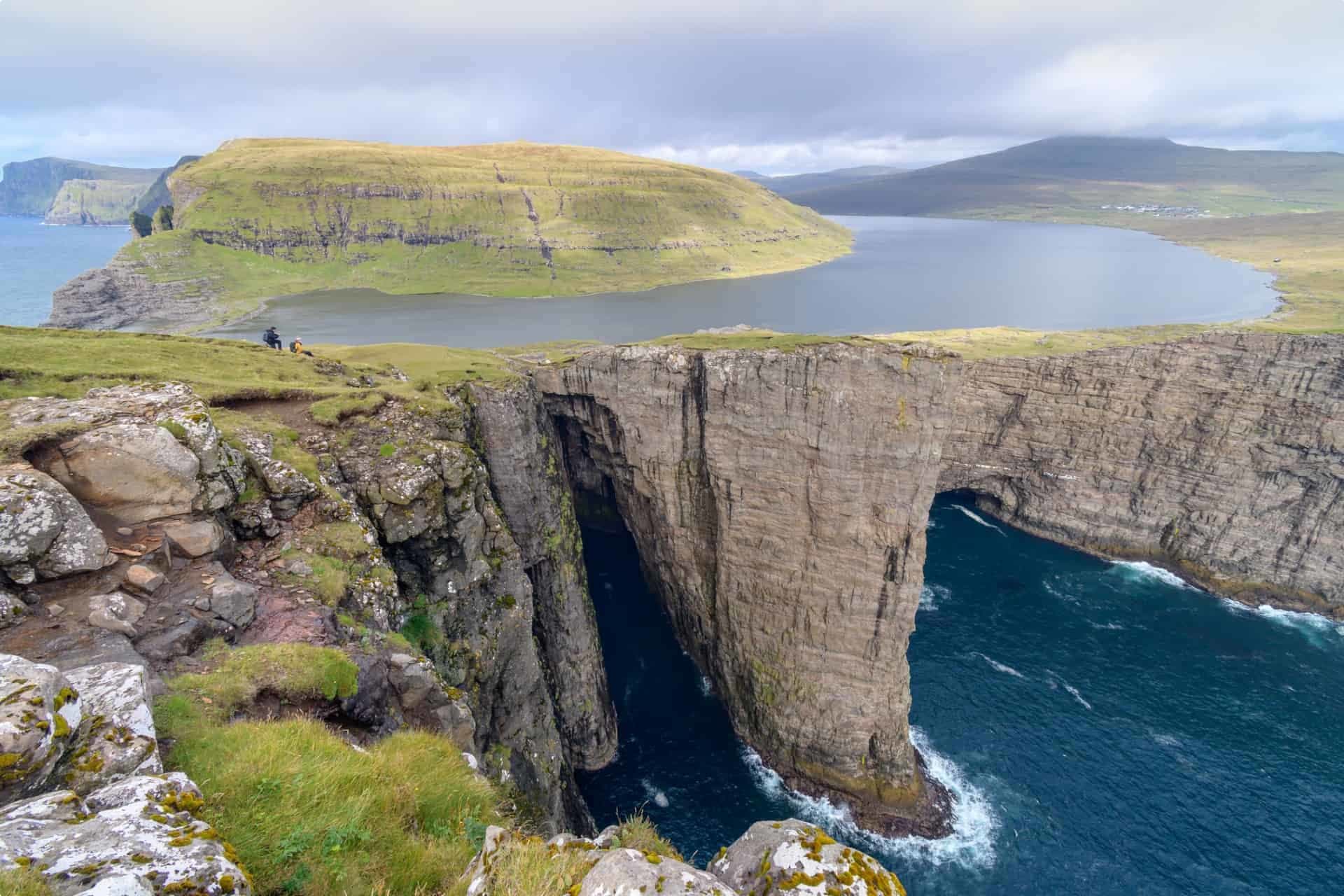
Lake Sørvágsvatn/Leitisvatn is the Faroe Islands’ largest lake, dubbed the “lake over the ocean” as it looks as if it’s hovering above the Atlantic. It is on the same island (Vágar) as the Faroe Islands’ airport and can be easily reached by car. Travellers can hike to the lookout spot to view the lake and, at lake’s edge, the Bøsdalafossur waterfall.
Gásadalur

Also on Vágar, the lush village of Gásadalur is the location of the beautiful waterfall Múlafossur. The tiny village only has about a dozen people. It was even more remote prior to 2004, when a tunnel was bored through one of the mountains to allow people to reach it by car. To get to the town before the tunnel was built, you’ll have to hike over the mountains, or travel by boat or helicopter.
Tórshavn

The capital of the islands has much to offer, including Tinganes, a cluster of red wooden houses that was the site of the first Viking parliament meeting many centuries ago. Though the Løgting is now housed in a new building, the office of the prime minister is still in Tinganes. Visitors are free to stroll around, which speaks to the unassuming nature and accessibility of the home government–the prime minister’s phone number is even listed in the phone book.
The most noticeable element of the islands’ architecture (which can be seen in the photo above) are the houses’ grass-covered roofs, an architectural practice that dates back to the age of Vikings, and which can be seen as well in Iceland and Norway. Houses on Faroe Islands have been built like this for more than a millennia for practical reasons–as a land mass that receives rain 300 days in a year, the grass-covered roofs provide rain protection and insulation from cold weather.
Koks
Did you know that these small group of islands is home to a Michelin-starred restaurant?
Not far from the capital is the restaurant Koks, which earned the Faroe Islands its first Michelin Star in 2017. Two years before that, it was given The Nordic Prize for best restaurant in the Nordic countries. It has a 17-course tasting menu which includes versions of classic Faroese cuisine, such as the national favourite, wind-dried mutton (Skerpikjøt). This foodie destination is as remote as it gets, and a must-visit for those with adventurous taste buds.
Vestmannabjørgini (Vestmanna bird cliffs)
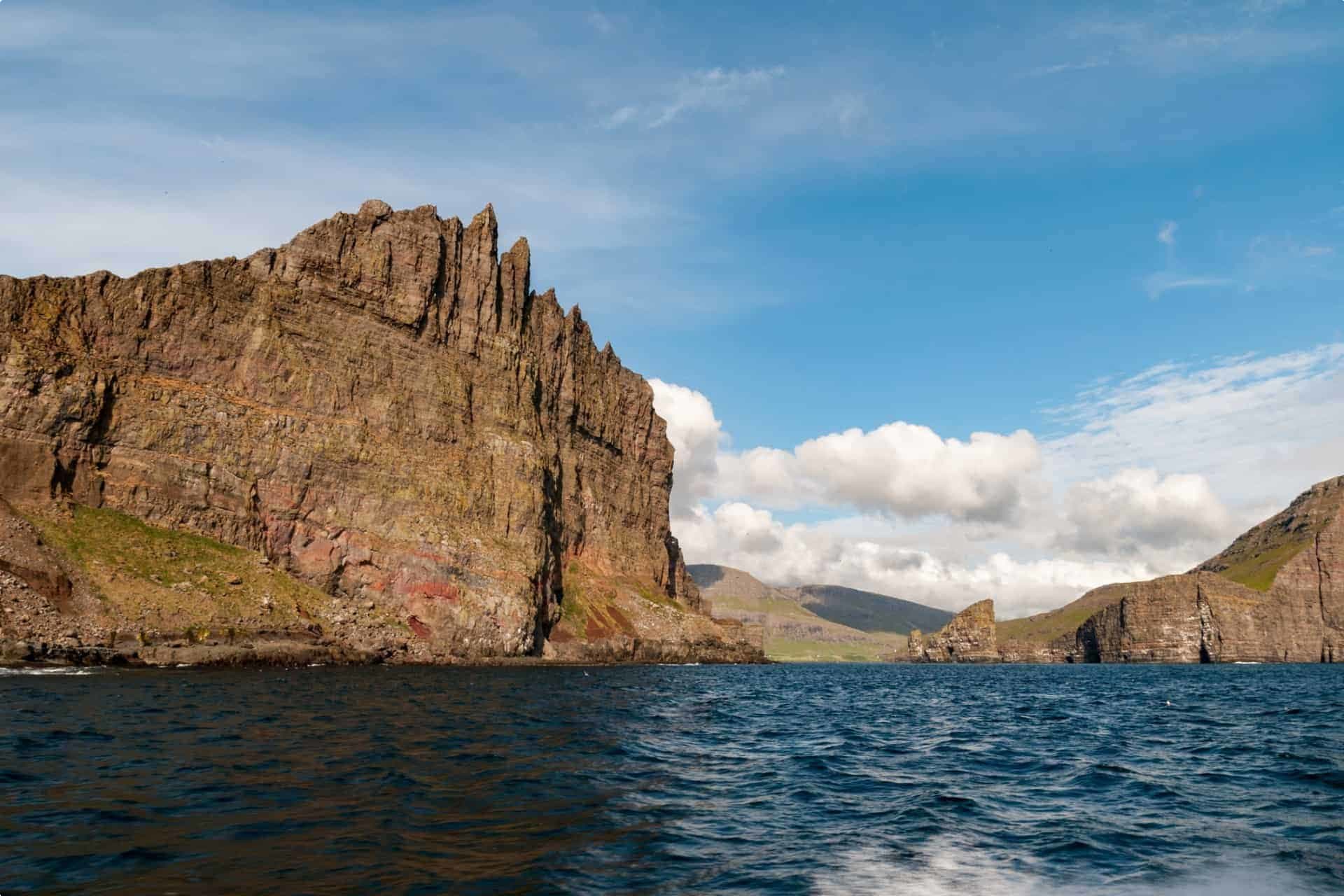
The Vestmanna bird cliffs are located on the same island as the capital–Streymoy, the Faroes’ largest and most populous island. These cliffs rise 700 metres (2,200 feet) above the waters of the ocean and offer nesting places to different species of birds. Travellers can take boat trips through the grottoes and straits to take in the sights.
Viewing the Northern Lights
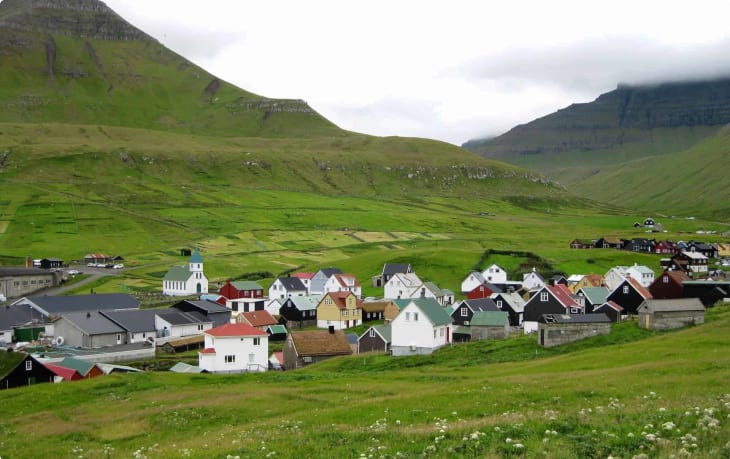
Weather permitting, the Faroe Islands can also be a good spot to see the aurora borealis (Northern Lights). Conde Nast Traveller suggests the villages of Gjógv on the northern tip of Eysturoy, and Klaksvík on Borðoy as good spots for the viewing, typically from September to March or April. Read our article with tips on photographing the Northern Lights here.
Birdwatching
The Faroe Islands is a birdwatching paradise, as it is often a stopover of birds migrating over the North Atlantic. Some 300 different bird species have been recorded at the Faroes, with only 100 species as its regular migrants or breeding birds. Common birds are the Atlantic puffin and the Oystercatcher, the national bird of the Faroe Islands. On the 12th of March, the Faroese celebrate Grækarismessa (St Gregory’s Day), marking the arrival of Oystercatchers and the start of summer.
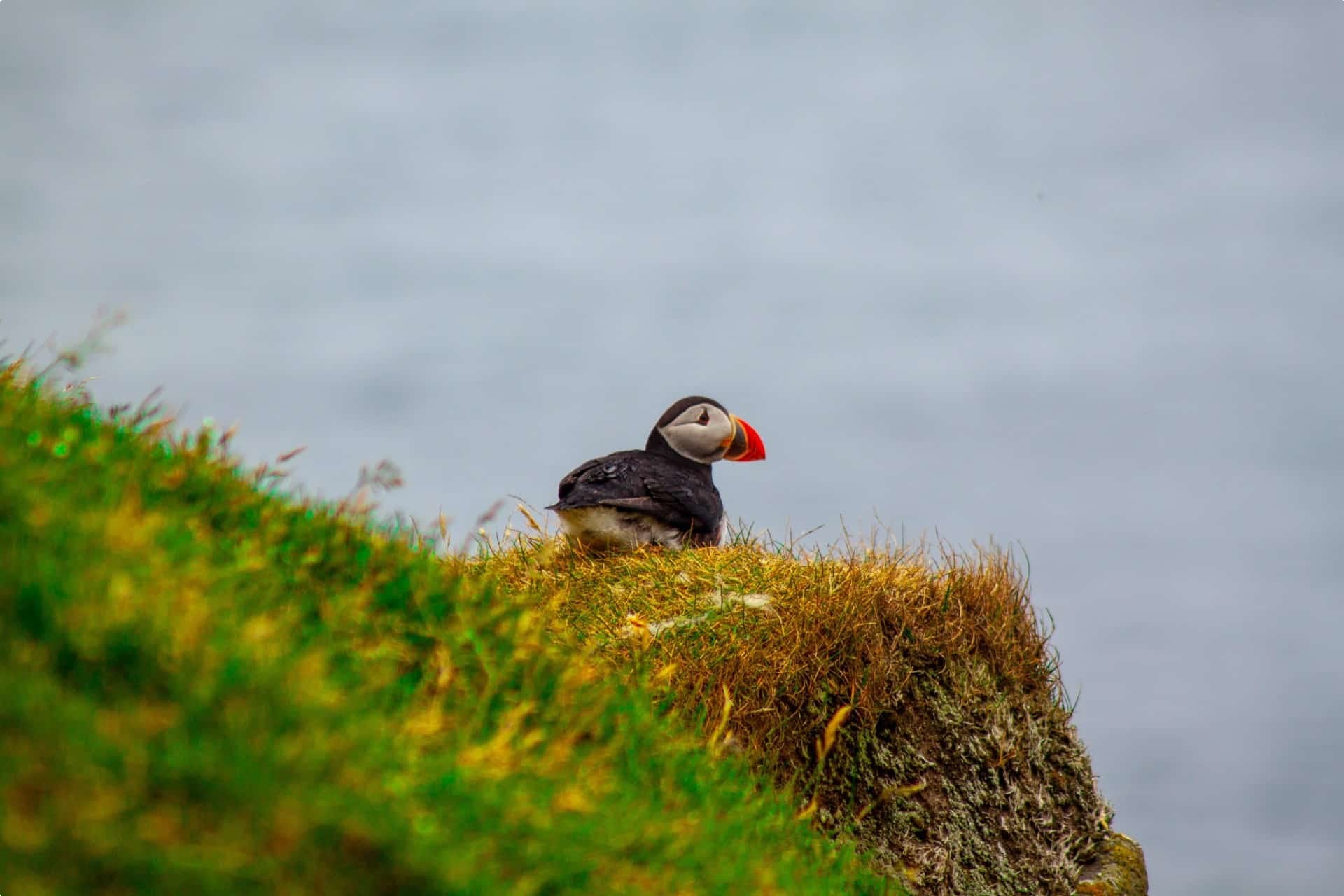
Odyssey Traveller regularly creates new tours designed for active senior travellers. Though the Faroe Islands is not on our list of destinations (yet), do check out our existing tours to Denmark.
The fully escorted and small group tour to Scandinavia covers Denmark, Sweden, and Norway. We also have a Scandinavian Design Tour with a special focus on the design and architecture of Denmark, Sweden and Finland. The Denmark Culture and History tour focuses on the heritage of the Danish kingdom. Please click through to see the full itinerary and sign up.
About Odyssey Traveller
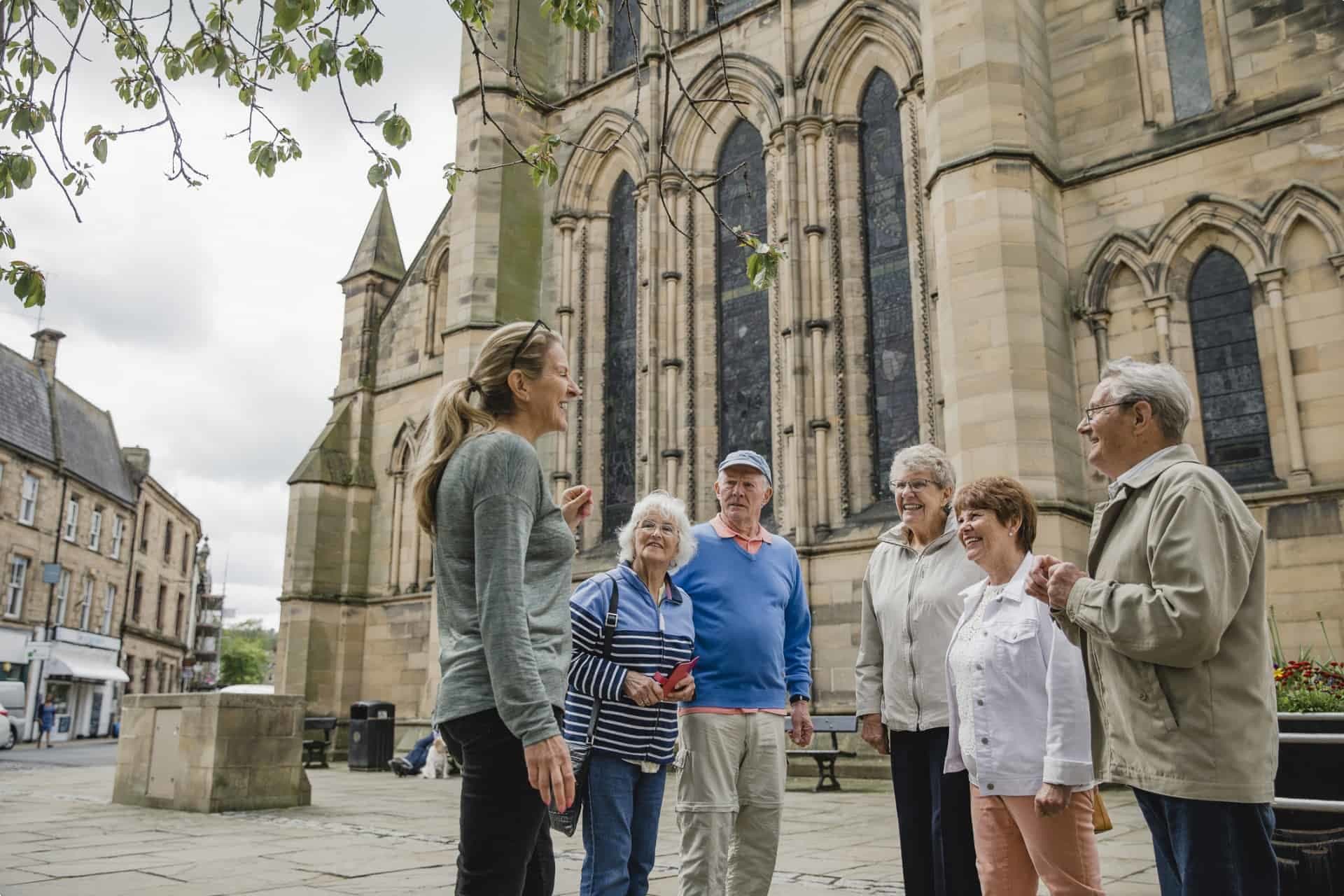
Odyssey Traveller is committed to charitable activities that support the environment and cultural development of Australian and New Zealand communities. We specialise in educational small group tours for seniors, typically groups between six to fifteen people from Australia, New Zealand, USA, Canada and Britain. Odyssey Traveller has been offering this style of adventure and educational programs since 1983.
We are also pleased to announce that since 2012, Odyssey Traveller has been awarding $10,000 Equity & Merit Cash Scholarships each year. We award scholarships on the basis of academic performance and demonstrated financial need. We award at least one scholarship per year. We’re supported through our educational travel programs, and your participation helps Odyssey Traveller achieve its goals.
For more information on Odyssey Traveller and our educational small group tours, do visit and explore our website. Alternatively, please call or send an email. We’d love to hear from you!
Related Tours
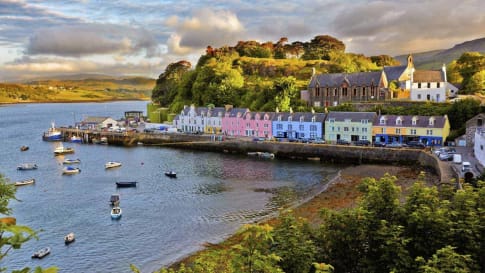
20 days
May, Jul, Aug, SepScottish Islands and Shetland small group tours for seniors
Visiting Scotland
An escorted small group tour for couples and solo travellers of the Scottish isles including the isle of Skye draws on local guides to share their knowledge of the destinations in this unique part of Scotland. UNESCO world heritage site are visited as breathtaking scenery and authentic experiences are shared in a group of like minded people on this guided tour of remote Scotland.
From A$17,525 AUD
View Tour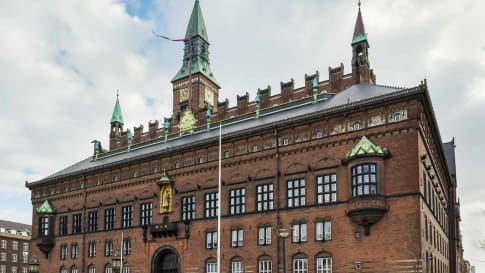
20 days
Aug, MayTour of Denmark's Culture & History
Visiting Denmark
Experience group travel for couples and single travellers to Denmark. This European tour provides a travel experience based around key destinations and itineraries that provide authentic experiences in Denmark .A single supplement applies for solo travellers.
From A$15,895 AUD
View Tour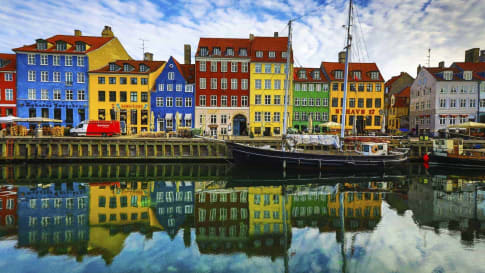
13 days
Jun, SepScandinavia tours for mature travellers
Visiting Denmark, Norway
Uncover on a small group tour for couples and solo travellers, a Viking past and view of the world’s biggest fjords on this journey through Scandinavia. In low-lying Denmark our small group journey takes us to visit the Zeeland, the sea land, and our program includes the vibrant capital of Copenhagen. In Norway we travel through endless forests, skirting great fjords to Bergen.
From A$14,995 AUD
View Tour